
BUTTERFLY BANK
For an overview of the first year of the butterly bank and more pictures, please see our blog: http://northcurrywildlife.blogspot.com/2019/03/the-butterfly-bank-first-year-account.html
Most of the butterflies seen at the Community Woodland are summer grassland species, such as the Meadow Brown, Ringlet, Marbled White and Large and Small Skippers. These species lay their eggs in the long grasses of the woodland and nectar on the abundant knapweed flowering at the site.
Occasionally, we have seen Brown Argus, Small Copper and Common Blue butterflies but not in any great numbers. So when an opportunity arose to create a south-facing slope at the front of the Community Woodland with spoil from the extension of the car park at White Street Sports Ground, this seemed a great chance to help these species with a ‘butterfly bank’ especially designed for them. Our plan was to sow the bank with wild flowers which would be a source of nectar for adult butterflies and food plants for their caterpillars.
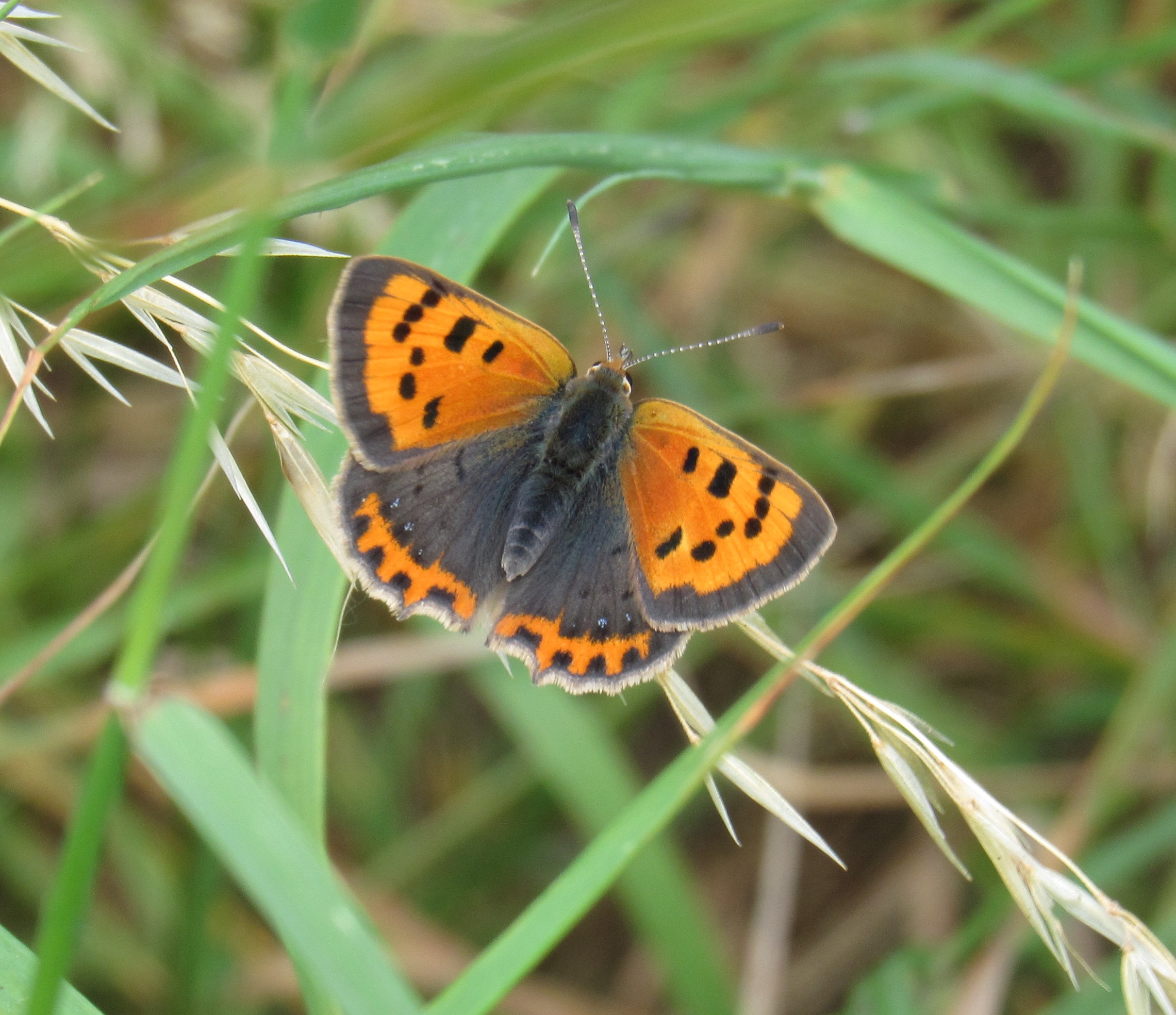
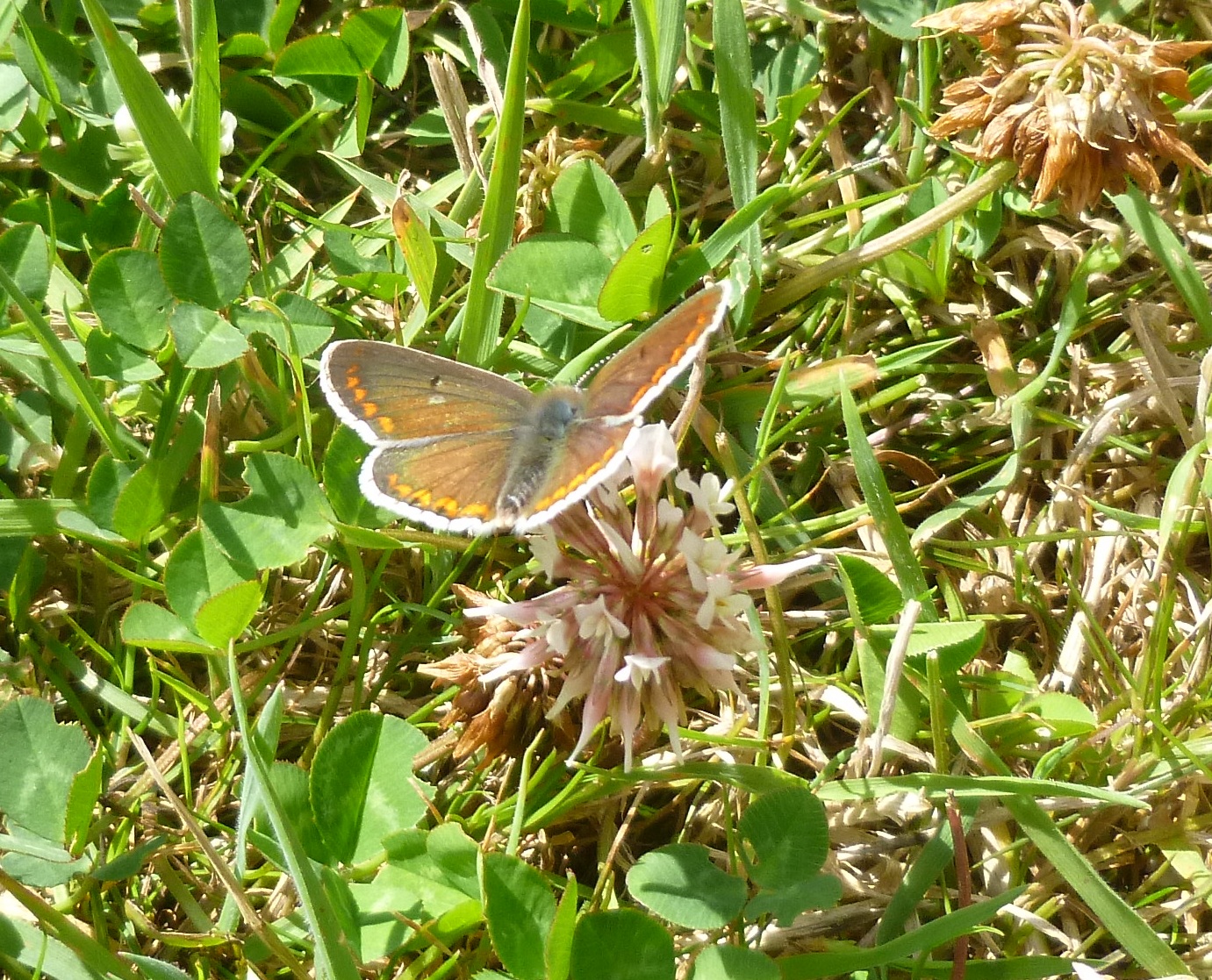
Brown Argus (left), Small Copper (centre) and Common Blue (right) butterflies
For the wild flowers to succeed on the bank, we needed to create the sort of nutrient-poor soil in which they flourish best. The larval food plants of the Common Blue, Small Copper and Brown Argus all need poor soil. The spoil from the car park was mainly top soil, so we added the subsoil excavated from the pond as well as some limestone chippings to a section at the front of the bank.
In mid-October 2017, we sowed the south-facing, and therefore warmest, section of the bank (covered in chippings) with a mixture rich in the larval food plants of the butterflies we wished to encourage. These seeds were bird’s-foot trefoil, lesser trefoil, meadow cranesbill, black medick, wild marjoram and sheep’s sorrel. We sowed the rest of the bank (the back and sides) with a wild flower mix of lady’s bedstraw, meadow buttercup, oxeye daisy, red campion, ribwort plantain, selfheal, rough hawkbit, yarrow and yellow rattle.
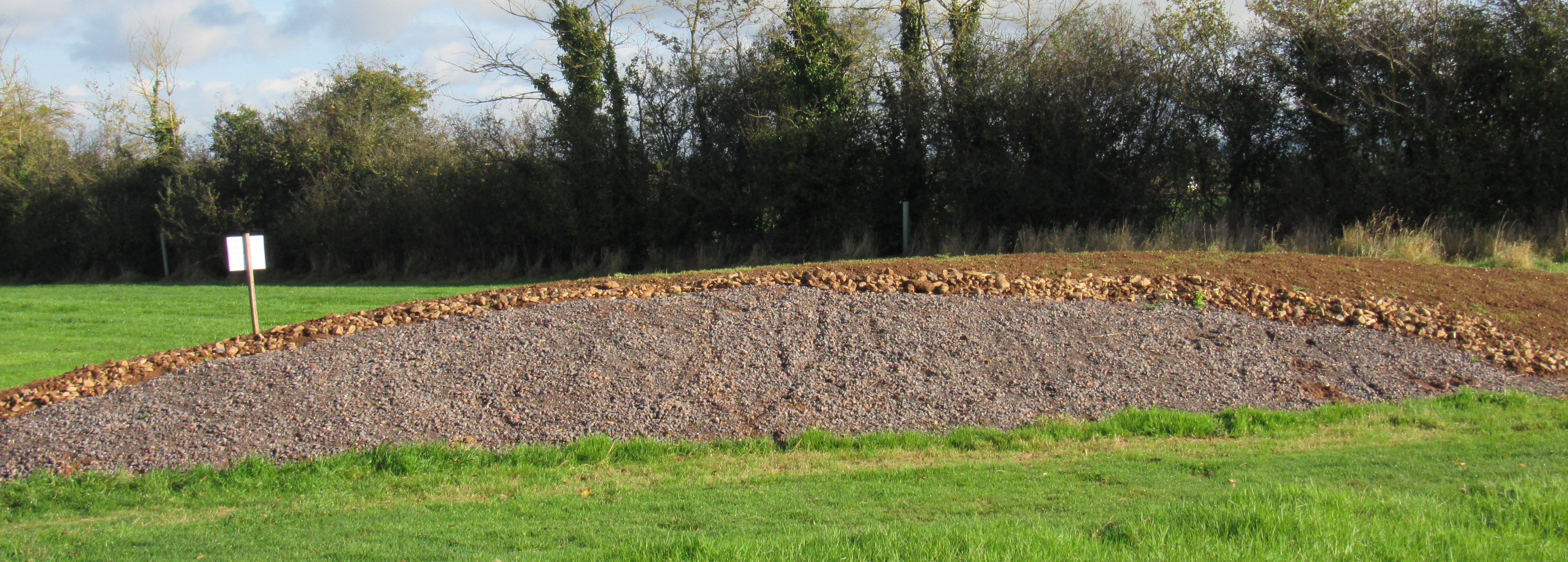
The butterfly bank newly seeded in October 2017
Some of the seeds germinated quickly, but then the bank lay dormant till the spring of 2018. By June 2018, however, the butterfly bank was looking more colourful with bright red self-sown poppies and the yellow flowers of bird’s-foot trefoil.
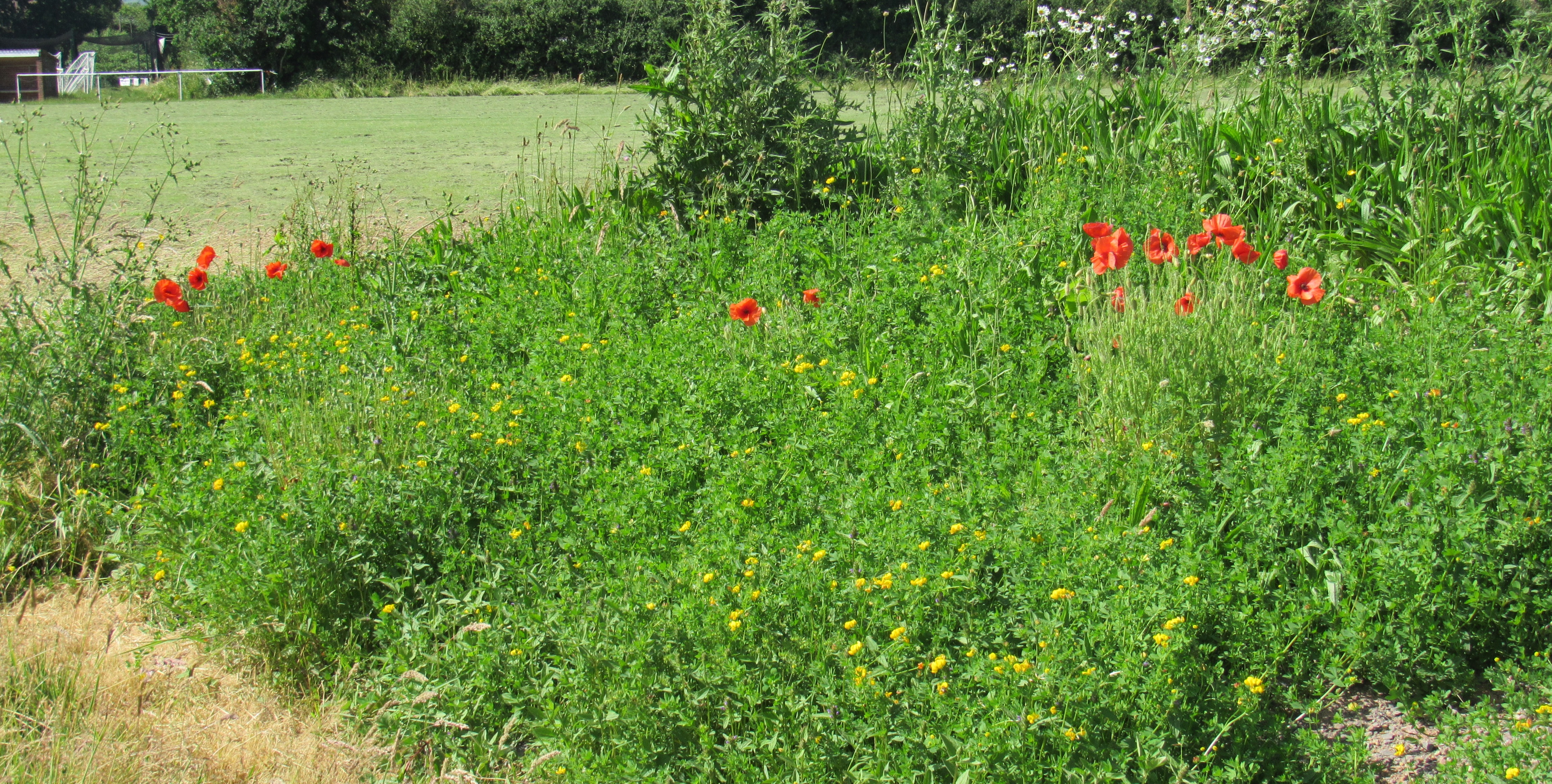
The butterfly bank in June 2018
Bees and hoverflies were seen visiting the flowers and the first butterflies on the bank were Large Skippers, soon followed by the brighter orange Small Skippers. The first Common Blues were seen on 7 July and they were soon joined by Brown Argus during July and August. Meadow Browns also used the bank to nectar on the self-heal flowers, and Marbled Whites and Large Whites were seen nectaring on self-sown thistles. In all, seven species of butterflies were recorded on the bank.
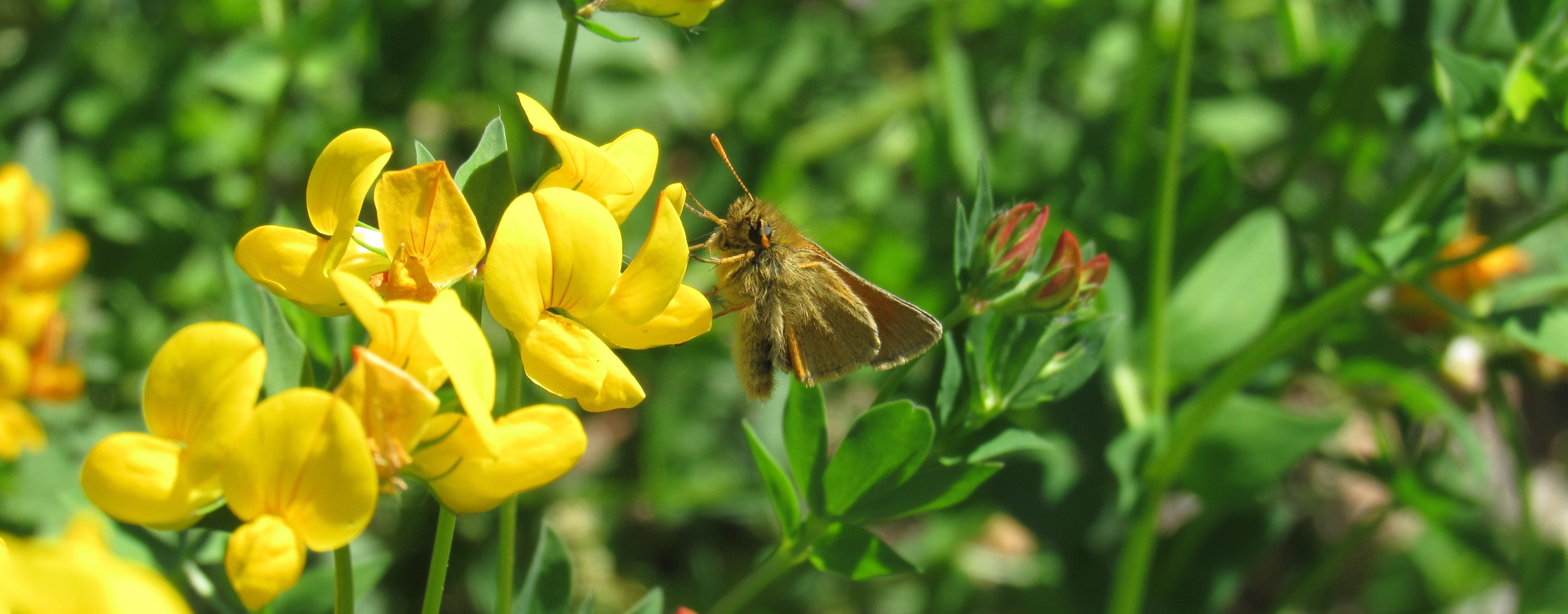
Small Skipper on bird's-foot trefoil on the bank
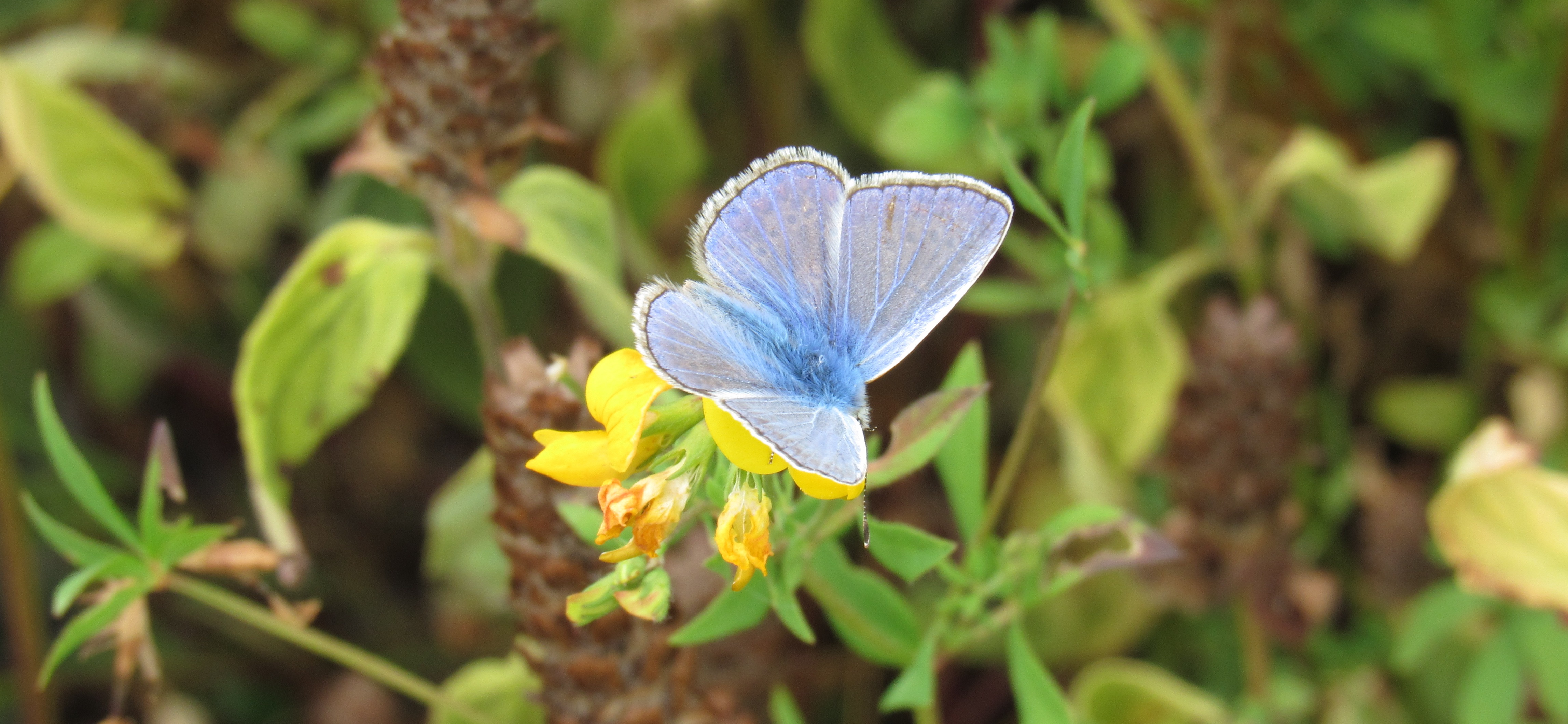
Common Blue male on bird's-foot trefoil on the bank
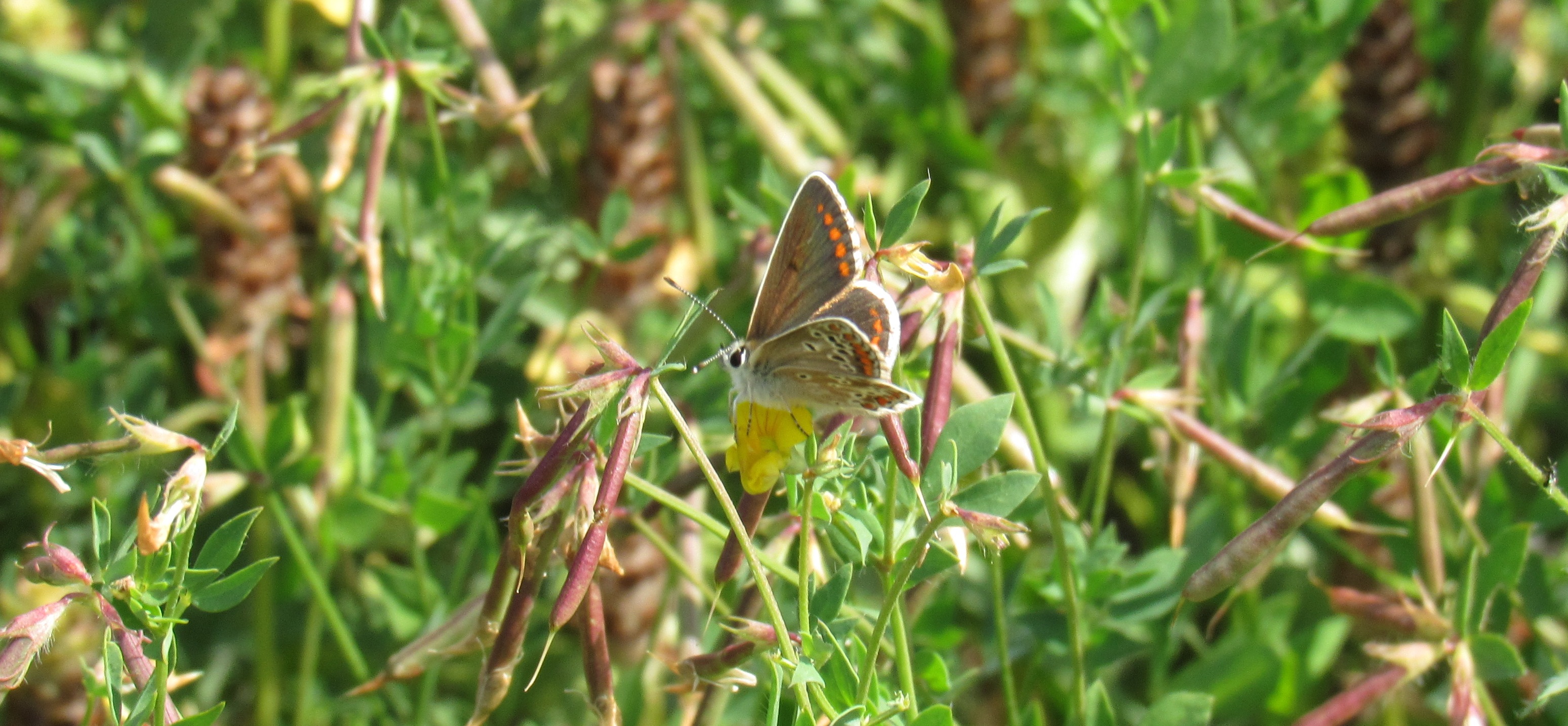
Brown Argus on the butterfly bank in July 2018
Unfortunately, we failed to attract any Small Coppers but this may have been because flowering plants set seed very quickly in the hot, dry summer of 2018 and there was little in the way of nectar later in the season.
But the bank was not just for butterflies: bees and hoverflies made use of it too, and Four-spotted Orb Weaver spiders, Meadow Grasshoppers and various beetles also found a home there.
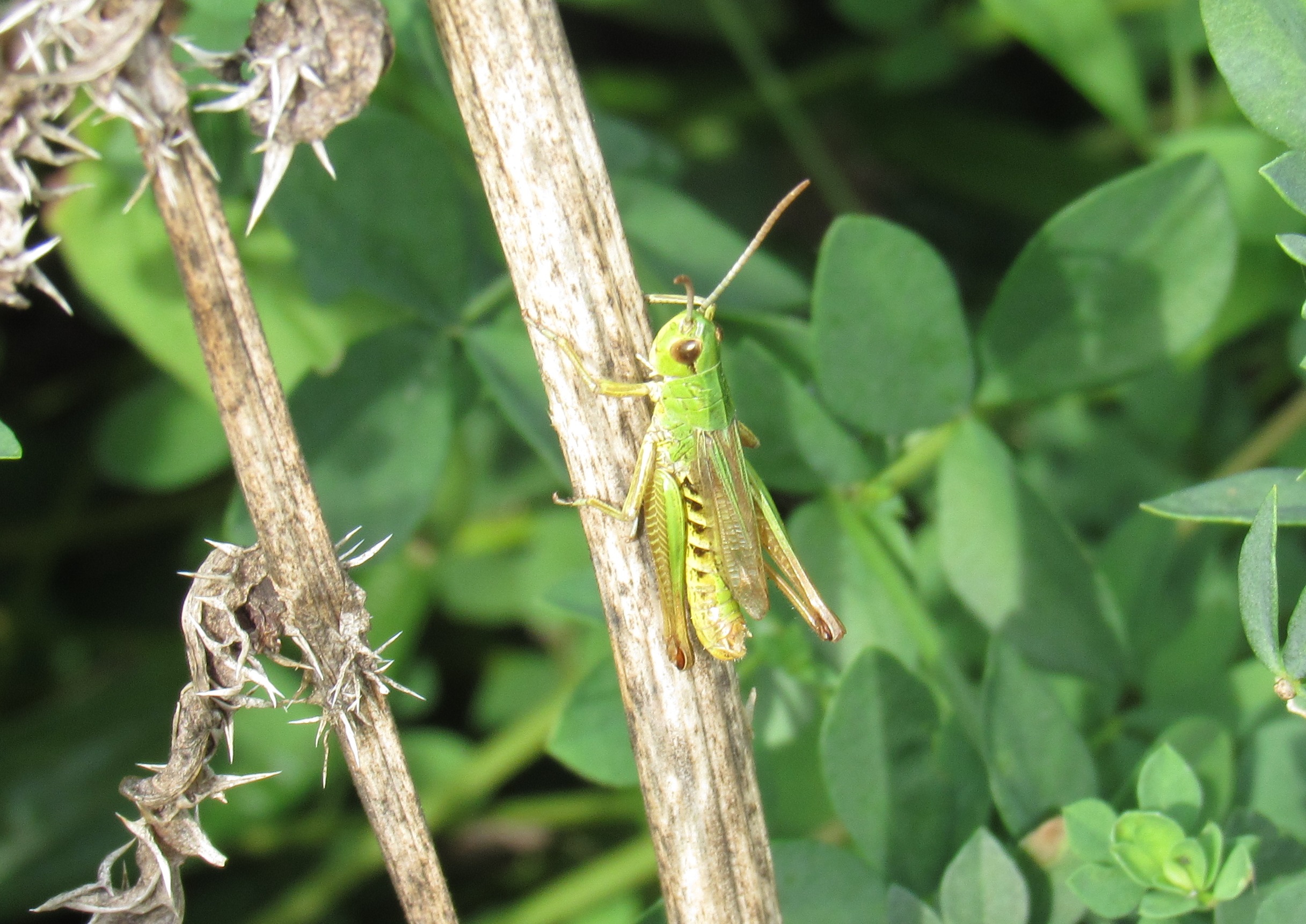
Meadow Grasshopper on the butterfly bank
We hope to improve the bank in 2019. The meadow mix sown on the back and sides of the bank was a disappointment, probably because the soil was too rich allowing plantain to take over, though various plants may flower better in the bank’s second year. With the aid of our Awards for All grant from the National Lottery Community Fund, we are planning to purchase more limestone chippings which should help the plants to thrive on the bank with a knock-on beneficial effect for all invertebrates.
We are extremely grateful to the Garden Club for a very generous donation which enabled us to buy the wild flower seed for the butterfly bank and an area of bank near the pond.